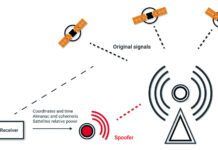ELECTRIC WINGSUIT FLOWN
Electric propulsion is showing up in every corner of aviation and an Austrian skydiver has launched an electrically boosted wingsuit. Peter Salzmann and BMW collaborated on the contraption that will allow a wingsuit pilot to climb briefly and reach speeds of up to 186 mph. Salzmann leapt from a helicopter at 10,000 feet in the first test flight of the suit in November. The rig is chest mounted and consists of two ducted fans powered by a lithium ion battery pack supplying 15 kW of power. Salzmann prototyped the unit and BMW engineers made it work.
WORLDWIDE AGENCIES DOUBLE CHECK MAX FIXES
Although the first U.S. Boeing 737 MAX revenue flight was scheduled for Dec. 29, the rest of the world is taking its time recertifying the airliner after a 20 month grounding. In November, the FAA signed off on Boeing’s fixes for the flight control system and other items that came up in the comprehensive review of the aircraft’s certification after two catastrophic crashes. The European Aviation Safety Agency is targeting January of 2021 to allow the MAX to fly and Canada had not set a timeline at our press time. Other aviation agencies were also predicting a return to service in early 2021. EASA said it’s not relying on the FAA’s process and has done its own review. Canada is also doing an independent assessment of the MAX fixes.
5G THREATENS AVIATION FREQUENCIES
Aviation faces a double threat from the cell phone industry as providers try to find new slivers of the finite pie of radio spectrum to carry their signals. A coalition of industries and groups dependent on GPS is lobbying Congress to overturn an FCC decision to allow a new 5G network to use frequencies adjacent to those used by GPS satellites to send timing signals to devices on earth. The coalition is concerned that much more powerful cell signals will drift over into the GPS frequencies and effectively jam them. The FCC has said that the cell provider, Ligado Networks, must prove that won’t happen before it’s allowed to proceed. Meanwhile, the Radio Technical Committee for Aeronautics (RTCA) is concerned that another 5G network will disrupt radar altimeter function and sent a report to the FCC outlining those worries.
EMBRAER EMBRACES ELECTRIC PROPULSION
Embraer is planning to build a hybrid electric military transport to replace two of the Brazilian Air Force’s light utility aircraft. The STOUT (Short Take-Off Utility Transport) will have two wing-mounted turboprop engines in the inboard positions and electric motors on the wingtips. It will carry up to 30 troops or three tons of cargo and is designed to operate from airstrips in the Amazon. Meanwhile, the company is also collaborating with the Brazilian arm of a Portuguese energy company in developing a pure electric aircraft. The test aircraft will be based on the Ipanema aerial application aircraft and will feature a battery and recharging system for the electric propulsion. Its first test flight is scheduled for early 2021.
EXPERIMENTAL FATAL RATE DROPS
The fatal accident rate for experimental aircraft continues to decline as building techniques and technology advance. There were a total of 44 fatal accidents in the category between Oct. 1, 2019 and Sept. 30, 2020 compared to 48 in the previous year. Most experimentals are also amateur built aircraft and that subcategory’s fatal rate declined even more compared to the category as a whole. There were 32 fatal crashes of amateur built aircraft compared to 38 in the previous year. The other accidents involved exhibition, R&D and racing planes. The rate has dropped significantly in the last decade. In 2011, there were 73 fatal accidents in the experimental category.
NOTAMS
Mahindra has stopped production of the GippsAero GA8 Airvan … Stratolaunch has started building its hypersonic testbed aircraft … French jet wingsuit pilot Vince Reffet was killed in a training accident … AOPA has launched a new online weather tool optimized for mobile devices … See AVweb.com for breaking news in general aviation.





